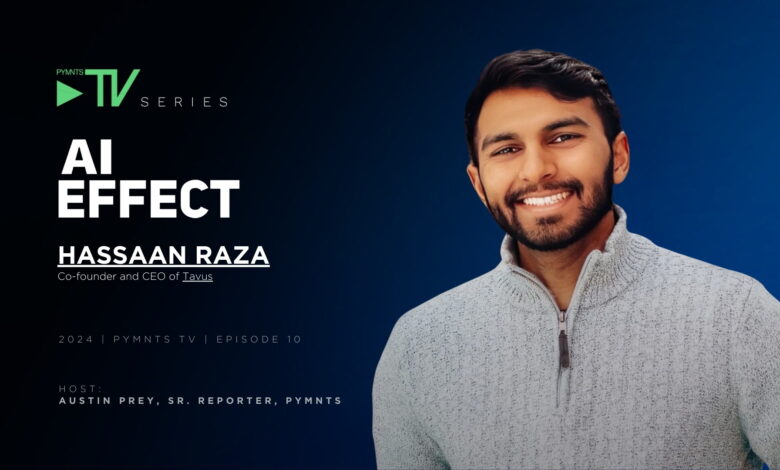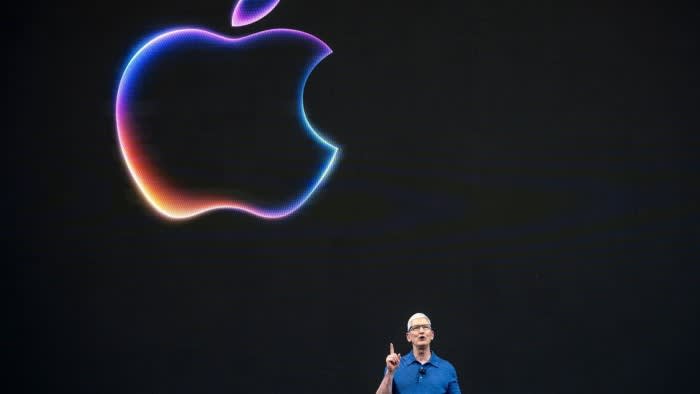AI Videos Touch Up the Professional Headshot

No one can be everywhere at once. Unless, of course, that person isn’t real.
And in today’s evolving business landscape, where remote and hybrid work are the norm, the staid experience of digital and video-driven interactions are ready to be disrupted — by generative avatar likenesses.
“Digital interactions today are not as immersive as face-to-face ones,” Hassaan Raza, co-founder and CEO of Tavus, explained to PYMNTS for the weekly “AI Effect” series.
“This is a problem faced by sales representatives and marketers, it is even faced by healthcare providers,” Raza said, noting that if these professionals were able to leverage their likeness at scale, they could deliver a personal touch within their digital interactions that is currently missing.
With the capabilities of multimodal generative artificial intelligence (AI), he added, this is increasingly possible.
Raza highlighted that one of the ideal use cases of AI-delivered digital likeness generation today involves healthcare professionals. For instance, doctors can use AI to send out patient instructions using their own likeness and voice in multiple languages, building trust and reducing anxiety by communicating in the patient’s native tongue.
Another use case is in sales and marketing, where personalized videos created using AI likenesses can make a substantial impact. Airlines, for example, use solutions like Tavus to create VIP greetings from pilots, adding a personal touch that enhances customer experience.
By removing the barriers to recording oneself, Raza explained, AI generation tools allow users to create thousands of personalized videos without the need for repeated recordings.
Are Avatar-Led Interactions the Future?
AI advancements have transformed what digital likenesses can achieve, moving from piecemeal personalization to generating entire videos that feel authentic and engaging.
“It’s a night-and-day difference of what we can accomplish now with the realism, and what we can actually generate versus we could a couple years ago,” Raza said.
Today, advanced lip-sync and full-face generation from audio allow for the creation of long-form content that appears natural and realistic. Yet despite the sophisticated computational generation involved, the final output of an AI-generated engagement is a standard MP4 file or a stream URL, similar to a YouTube video.
This simplicity in integration has enabled even large enterprises with typically long integration timelines to adopt AI-generated personalized interactions quickly, Raza said. He noted that next three to five years will likely see advancements in full-face expression, body, torso and hand gestures, making digital replicas even more lifelike and immersive.
For businesses looking to leverage hyper-personalized, AI-generated videos, using a solution like Tavus via its developer APIs is relatively straightforward.
However, as Raza emphasized, achieving optimal results requires quality training data. That’s because while AI can create impressive results, “It is not magic.” Proper preparation and understanding of the technology’s current limitations are essential for success, he said.
Practical Considerations for AI Videos
While the future of AI-driven digital interactions is promising, it still requires businesses to embrace a careful consideration of the technology’s limitations and potential advancements. Currently, AI systems are primarily effective for front-facing digital twins, with limitations on complex movements and interactions. Future research aims to overcome these barriers, enhancing facial expressions, gestures and overall realism.
And as Raza explained, Tavus places a strong emphasis on transparency, disclosure and consent. The company has implemented stringent measures to ensure that replicas can only be created with explicit consent. This approach is crucial for maintaining trust and avoiding the pitfalls of unauthorized use, as highlighted by the recent incident between Scarlett Johansson’s vocal likeness and OpenAI.
But by addressing current technological limitations and focusing on ethical considerations, companies like Tavus can help set a standard for how digital avatars can enhance communication across various industries. As research progresses and technology evolves, the future promises even more lifelike and engaging digital experiences, revolutionizing the way businesses and individuals interact digitally.
For all PYMNTS AI coverage, subscribe to the daily AI Newsletter.



